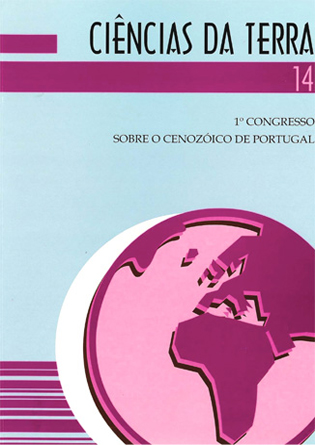The Neogene of Algarve (Portugal)
Abstract
Key-words: Neogene; Stratigraphy; Algarve; Portugal. A synthesis about the Neogene and Quaternary of Algarve (Southern Portugal) is presented. New isotopic 87Sr/86Sr ages as well as biostratigraphic data about the Miocene deposits allow to present a new stratigraphic frame for the previously characterized units. The Lagos-Portimão Formation corresponds to deposits of "temperate carbonate platform" sedimentological type, developed during a long time span (lower Burdigalian to Upper Serravallian). A major change in sedimentation conditions (carbonate to siliciclastic environments) occurred in the Lower Tortonian with the deposition of yellowish sands. Spongoliths rich in microfossils are represented in Algarve inland. Their age is not well established; calcareous nannofossils indicate the CN5a zone (Upper Scrravallian) while foraminifera point out at least N16 zone (Lower Tortonian). In the Upper Tortonian, the sedimentation is widespread in Eastern Algarve, related with the Guadalquivir Basin infill. The deposits begin with detrital limestones, locally very rich in Heterostegina, passing to fossiliferous conglomerates and siltstones (Cacela Formation). Coarse-grained conglomerates at Galvana (Faro) pose some age problems. K/Ar age on glauconite indicates 6.72±0.17 Ma. However, glauconites may be reworked from older deposits (Cacela Formation). The Galvana Conglomerate could be related to Pliocene deposits are not well characterized. Olhos de Água sands, with a thin marine intercalation rich in marine vertebrates (fishes, a crocodile, cetaceans, sirenians), may be Upper Pliocene; however, the vertebrates point out to a Serravallian to Tortonian age. 87Sr/86Sr ages on oysters from above the level with vertebratcs point out to 3.0(+2.5-1.0) Ma. Similar sand deposits occur at Morgadinho (Luz de Tavira). These sands are overlain by marls, lignitc clays, lacustrine limestones and a silty calcareous crust. A smaIl mammals association indicate an age span between Upper Pliocene and Lower Middle Pleistocene (MN17-MN20). A Biharian mammal fauna (Lower Pleistocene) was collected at Algoz in similar deposits. In the present state of knowledge, Morgadinho and Algoz deposits may be correlative.Downloads
Published
2009-06-09
Issue
Section
Articles






